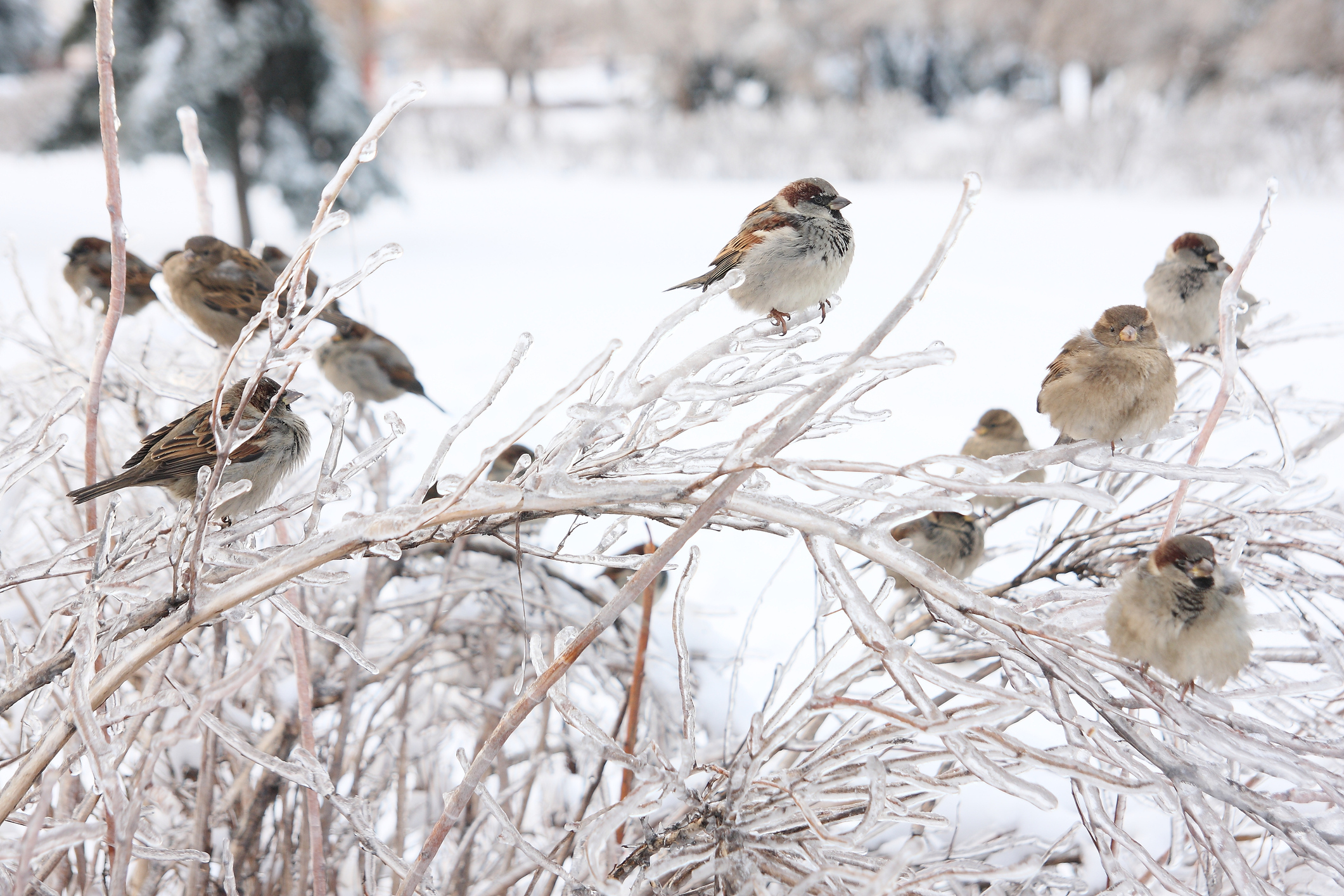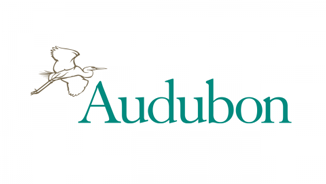
Posted November 1st 2022
Why some Bird Species don’t Migrate
Each fall, billions of birds take flight and travel thousands of miles south for the winter. Some of them, however, choose to spend their winters close to home. Year-round, avian species like the Black-capped Chickadees, Downy Woodpeckers, and Northern Cardinals can be spotted across North America.
But regardless of whether birds migrate or stay local, Feather Friendly recognizes the vital contributions they make to our environment and economy. From seed dispersal and pollination to pest control, birds are invaluable. They are critical for the functioning of ecosystems and contribute billions of dollars to the world’s GDP, making bird conservation paramount for all.
Our latest blog explores why some birds forgo migration and what we can do to keep our homes, businesses, and cities friendly for local birds. So first, let’s take a closer look at why some birds skip migration.
Why some Bird Species don’t Migrate
Research indicates that avian migration is closely linked to resource availability and climate. If areas are low or decreasing in resources, birds will migrate to areas of high or increasing resources.
Birds that occupy the Northern Hemisphere typically migrate in the spring to take advantage of rising insect populations, blossoming plants and an abundance of nesting locations. As winter draws near though the availability of these resources drops and the birds head south. Thus, we see species like the Ruby-Throated Hummingbird in the summer months and not during the winter.
And while some birds, like the Ruby-throated Hummingbird, will travel thousands of miles multiple times a year, a wide range of avian species prefer to spend their winters close to home.
According to All About Birds, an online guide created by The Cornell Lab of Ornithology, North American birds that don’t migrate are called “permanent residents,” because of their ability to forage for food and find shelter, 365 days a year.
Here are some examples of the permanent residents you can spot across North America this winter:
Downy Woodpeckers
This active year-round forager can be spotted in a variety of areas, including residential communities, city parks, and wooded areas. And although this black and white woodpecker doesn’t sing, it does charm bird watchers with its loud drumming.
During the winter months, male and female Downy Woodpeckers are likely to split off to separate locations in search of food.
This avian species is also the most likely among the woodpecker species to visit a backyard bird feeder. They prefer suet feeders but will settle for black oil sunflower seeds, millet, peanuts, and chunky peanut butter.
Black-capped Chickadees
This active and adorable bird species can be found in the open winter woods and forest edges throughout Canada as well as the northern half of the United States.
They are known for their distinctive black cap and bib, white cheeks, gray back, wings and tail, and whitish underside. These small and curious permanent residents also have quite a complex language-like call and are known to collect and store their food in a variety of locations.
According to All About Birds, Black-capped Chickadees are one of the easiest birds to attract to feeders. They are especially attracted to nest boxes filled with sawdust or wood shavings. When it comes to food, chickadees enjoy suet, sunflower seeds, peanuts, or peanut butter. Planting willow, alder, and birch trees can also attract this species as they present future nesting spots.
Northern Cardinals
Familiar yet striking, the bright-red plumage on both male and female cardinals makes for quite the winter spectacle. You can spot Northern Cardinals in dense vegetation foraging for seeds, fruit, and insects.
Fun fact, unlike most female songbirds, female Northern Cardinals sing, and this distinct call can be heard throughout both the winter and summer months.
If you live within the range of the remarkable Northern Cardinal, you can attract them with just about any bird feeder, as long as you fill it up with sunflower seeds, peanut hearts, millet, and milo.
Blue Jays
Blue Jays are interesting migrators. While some jays may decide to stay put in the winter, others choose to take flight, and this choice is also subject to change.
Some Blue Jays migrate south one year, stay north the next year, and then migrate south again the following year. Their migrating pattern remains unclear and continues to baffle ornithologists.
Blue Jays that stick around for the winter prefer tray feeders or hopper feeders rather than hanging feeders and enjoy snacking on peanuts, sunflower seeds, and suet.
Black-billed Magpies
This entertaining and social avian species can be found throughout western North America. Often spotted on fenceposts and road signs, the large relative of the jay and crow is known for being an extremely intelligent and adaptable species.
Fun fact, the Black-billed Magpies are one of four North American songbirds whose tail makes up half or more of their total body length.
White and Red-breasted Nuthatches
White-breasted and Red-breasted Nuthatches reside in Ontario all year long.
The White-breasted Nuthatch, better known as the “upside down” bird, is often observed headfirst while searching cracks and crevices for insects.
White-breasted Nuthatches are mainly found in southern Canada and the United States, while Red-breasted Nuthatches are found in northeastern and western states, Alaska and Canada.
Red-breasted Nuthatches are typically found in coniferous woods where an abundance of pine-like needle leaves can be used as shelter. White-breasted Nuthatches, on the other hand, can be found in deciduous forests and wooden urban areas with lots of oak and maple trees.
How non-migrating Birds Adapt
Migration is a key part of a bird’s survival. Thus, birds that don’t migrate, must adapt to survive in the same area year-round. Below you will find some of the typical adaptations birds make instead of migrating:
Changing Food Preferences
Since non-migrating avian species like Black-capped Chickadees and Northern Cardinals refrain from moving to areas with richer food sources in the fall, they must adapt to the foods that are locally available in different seasons. Permanent residents eat buds, insects, berries, and seeds in the spring and summer months and switch to fruit and nuts in the fall and winter when food sources are limited.
Molting
Have you heard of molting? It’s when birds shed their old feathers and replace them with fresh new ones. It can be done partially to replace a few feathers or completely to offer birds a new coat of plumes.
Molting is especially important for birds that live year-round in cold northern habitats. Birds in these climates typically molt in the late summer and early fall as it provides them with an extra layer of feathers, which helps them preserve body heat and protect them from extreme cold in the winter.
Caching Food
Winter is the time of year when food is scarcest for birds, with reduced insect activity and a layer of snow covering nuts and seeds on the ground. To prepare, non-migrating birds often cache food in the late summer and fall, hiding seeds and nuts in protected areas for them to retrieve later. Some avian species resort to tucking snacks under bark or wedging them into tree crevices, while others prefer to bury them.
What’s more, any nuts and seeds that aren’t eaten may grow into grasses, shrubs, and trees, which can later be used as habitats.
Mixed Flocks
Birds of a feather don’t always flock together. In fact, birds that stay in the same area year-round often join forces with other flocks to forage during the winter. For example, many smaller birds like chickadees, nuthatches, and downy woodpeckers, flock together in the winter months.
With more eyes searching for sources of food, non-migrating birds that join mixed flocks are well-equipped to adapt to the limited number of resources.
Communal Roosting
Winter nights are pretty cold, especially in certain parts of North America. It comes as no surprise then that birds that roost together have a greater chance of surviving these freezing overnight temperatures because of their shared body heat.
It’s especially common for small non-migrating birds to gather in large flocks at night and crowd into a small, tight space, like an empty birdhouse or the trunk of a tree, to share body heat.
Protecting Local Bird Species this Winter and Beyond
Each year, we spend a considerable amount of time discussing the numerous threats migrating birds face, but local birds also face a grave number of dangers by staying put.
Studies have shown that human-centric environments have had a profound effect on not only bird habitats but also bird behaviours too.
Here are some ways you can help local bird species this winter and beyond:
Keep a reliable water source nearby
The ponds, rivers, and lakes birds frequented in the warmer months to get their water will soon be frozen. To help them stay hydrated over the winter, be sure to provide a reliable water source.
If you have a bird bath, you can use a heater to keep the water from freezing or if you have a pond consider leaving a bubbler in it over the winter.
Offer high-energy foods
During the cooler months, birds need to move more to stay warm and survive the cold. But for this to happen, they need a steady source of high-energy foods and given the lack of resources in the winter, this can be challenging.
This is where we come in. We can provide a variety of high-energy foods to help permanent residents thrive all winter long! Suet, peanuts, black oil sunflower seeds, and mealworms are just a few examples of high-energy foods you can add to your feeders this winter.
However, it’s important to note that certain birds are attracted to specific feeders and food. Therefore, it’s important to do some research before to ensure that the birds populating your backyard stay safe and healthy.
Leave your Trees and Shrubbery Untrimmed
Leaving your trees, shrubs, and perennials untrimmed provides the birds in your area with an assortment of delicious snacks, especially for when the snow arrives and covers the ground, preventing them from accessing ground seeds.
Provide Protection from Wind
Non-migrating birds will be on the hunt for shelter in areas that block the wind and cold. Building a simple stick pile in the corner of your yard, leaving birdhouses up, and putting up roosting boxes can help provide shelter to permanent avian residents over the winter.
You can also plant native trees, evergreens, and shrubs with berries for additional shelter and food. Although they won’t be ready this winter, in time they will grow to provide additional shelter and food options.
Turn your Lights Out for the Birds
Modern conveniences like lights, cars, and more have not only shaped human life, but also wildlife, too.
The presence of artificial light negatively impacts birds in several ways. Millions of birds, migrating and non-migrating, become disoriented by bright city lights at night. This can cause them to collide with glass and miss ideal climate conditions for nesting, foraging and other behaviours. Due to these disturbances, many avian species will suffer from inadequate shelter and food, which ultimately affects their ability to reproduce and survive.
To protect bird species from the effects of light and noise pollution, practice turning out your lights when not in use.
Install Feather Friendly Bird Deterrent Window Markers
Feather Friendly bird deterrent window markers are designed to be installed in temperatures above 10° C. To ensure you protect birds from deadly glass collisions all year long, we recommend purchasing and installing your residential or commercial window markers early in the season, before the temperatures drop.
Make Every Winter Feather Friendly by Supporting Local Birds
For more information on how to care for birds in winter, check out these great resources from our partners at the Vancouver Avian Research Centre: ‘Caring for Birds in Winter’ and ‘How to Support Birds in Winter.’
Both local and migratory birds need our help to prevent needless bird collisions. Local bird species are also at risk of getting injured, or killed, from glass collisions. So, we urge you to keep your feathered friends in mind by arming your commercial or residential space with our glass collision deterrent markers. Contact us today to discuss our residential and commercial solutions.
Partners
We are honoured to form partnerships with organizations who demonstrate
an ongoing commitment to bird conservation.



